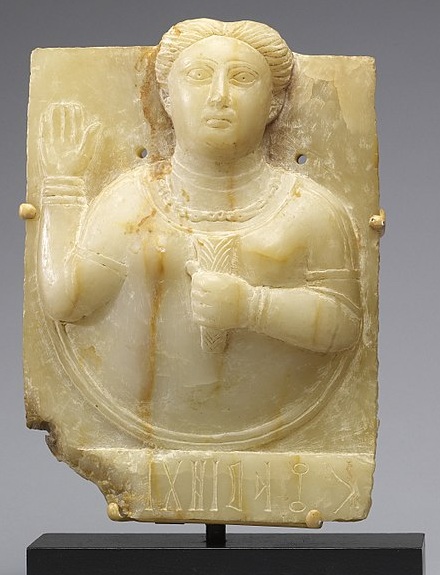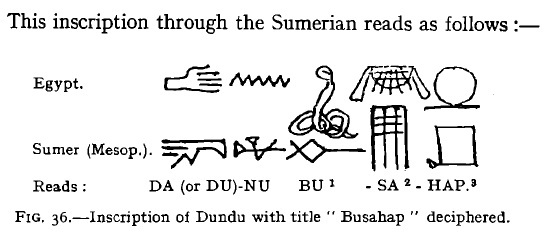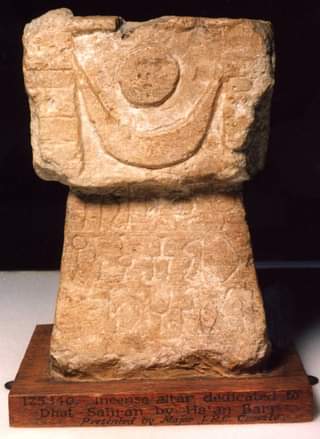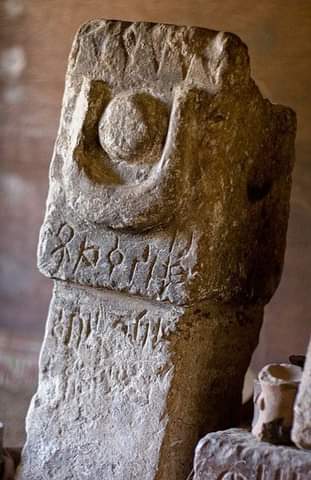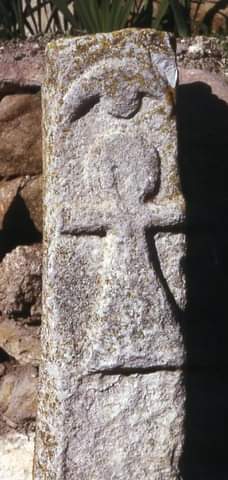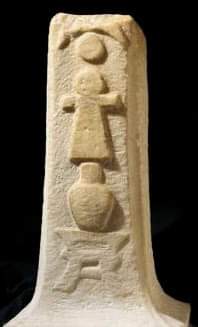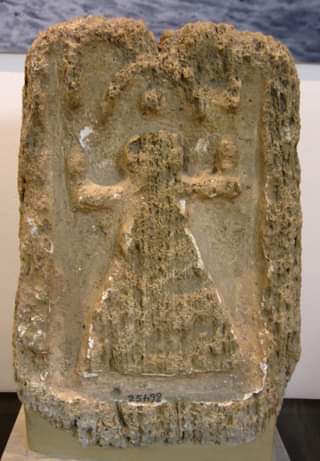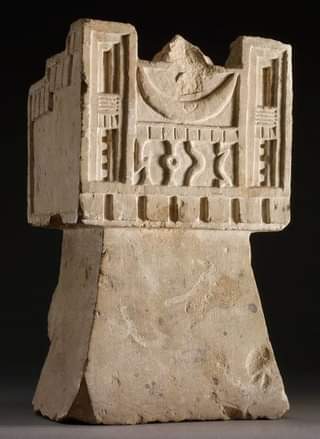
| SUN GODDESS SHAMS
Sculpture of a Sabaean priestess raising her hand to intercede with the Sun Goddess on behalf of a donor. Probably first century Hand Symbol :
A question comes in our mind is about the Hand Symbol used on Tombstones. Many people will say that it's a sign of blessings but I found the answer from Lt. Col. Laurence Austine Waddell another book called "Aryan Origin of the Alphabet".
To download Aryan Origin of the Alphabet Pdf Click here.
It is presumably owing to D being derived from the Sumerian Da, Du that in Spanish the letter is pronounced Du.
The Hand symbol on Tombstones represents Aryans the Letter Da.
Da
is the hieroglyph for "Hand". That hieroglyph Da "Hand"
has been disclosed in the Sumer-Aryan Dictionary to be derived from
the Sumerian Da pictogram for "Hand".
Thor is the first King of Aryans. The Hand symbol on Tombstones represents that the Tombstones are of Aryans. The Right Hand on Tombstones shows sun-wise right-hand direction of the Aryan Solar-cult.
Example :
This example of Hand symbol as Da I have taken from Lt. Col. Laurence Austine Waddell in his book "Egyptian Civilization - Its Sumerian Origin RC 1930".
To download Egyptian Civilization - Its Sumerian Origin RC 1930 Pdf Click here.
To know more about Aryan origins and download all important Pdf related to it by Lt. Col. Laurence Austine Waddell Click here.
To download Pdf on Tombstones Click here.
Shams :
Shams, also called or Shamsum or Dhat-Ba' dhanum, is a sun goddess of Arabian mythology. She was the patron goddess of the Himyarite Kingdom. Her name meant shining, Sun, or brilliant. She was the South Arabian equivalent of the North Arabian sun goddess Nuha.
Prior to Islam, religion on the Arabian Peninsula focused on local gods, with every tribe and kingdom having their particular protective deities. However, there were also gods common for all Arabs, and the trinity of gods representing the Sun, the Moon and the planet Venus seem to have been worshipped throughout Arabia, though their names, gender and worship differed between regions. Thus, Nuha was the name of the sun goddess in Northern Arabia, while the name of the sun goddess in Southern Arabia was Shams.
As Nuha, Shams was also worshipped in a trinity alongside the male gods of the Moon and Venus. In Saba', the sun goddess Shams was worshipped with the god of the planet Venus, Athtar, and Almaqah, the god of the Moon. In Hadhramaut, Shams was worshipped with Athtar and the moon god Syn. Shams was described as the spouse of Athtar. She was given votive offerings in the shape of horses.
In Mesopotamia, Athtar was identified with the goddess Ishtar, and Shams with the sun god Shamash.
In the research of Lieutenant Colonel Laurence Austine Waddell he states that Venus is Eve i.e. Ishtar and Trinity is :
1. Thor / Adam / Indra / Shiv,
2. Eve / Venus / Parvati and,
3. Cain / Daksh (son of Adam and Eve).
Gallery :
Arabian altar with Qatabanic inscription
Altar with Sabaean inscription from the Yeha treasury, Ethiopia
Yemenite altar now in a museum in Istanbul, strikingly with the Sign of Tanit, as she is known in Carthaginian context
Sign of Tanit, combined with lunar crescent and either sun or planet Venus, from a tophet in Carthage
Sign of Tanit with crescent and disc, above a votive jar on a Carthaginian altar dating to the 4th century BCE
A very weathered limestone Tanit stela from a Sardinian tophet, now in the Nora Museum
Another Yemenite censer from Hayd ibn Aqil |
